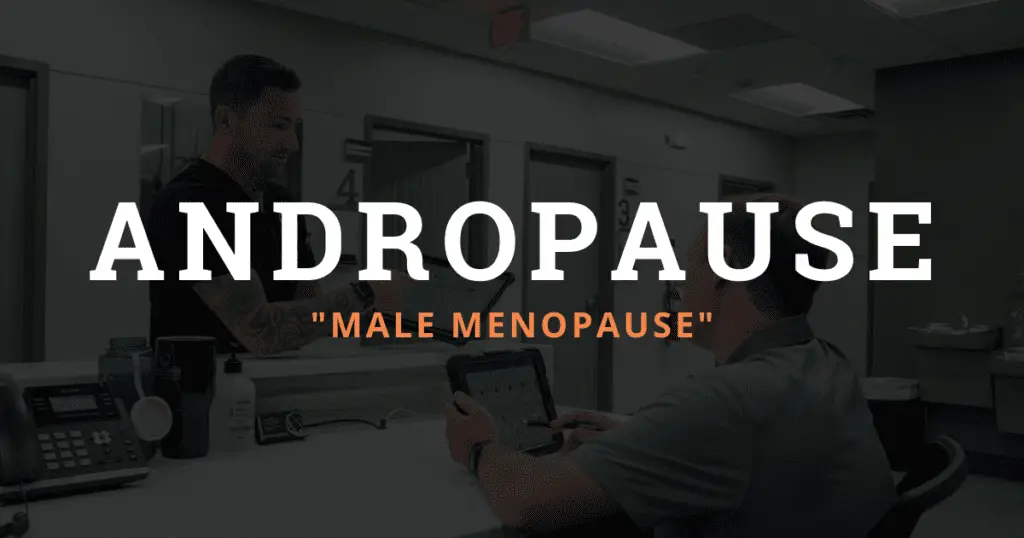Men’s health starts with maintaining adequate hormone levels and addressing medical concerns. Many men face unexpected changes in their bodies and mental state without clear answers. The aging process is often tricky and confusing for them, but adequate healthcare services can shed new light on correlated issues and present new solutions.
Low-T is the most prevalent sign of andropause, and men begin to experience related symptoms as early as 30. These hormonal changes affect many aspects of men’s lives, and immediate treatment could vastly improve their health. But what is andropause?
What Is Men’s Andropause?
Andropause, or male menopause, is the period in a man’s life when testosterone declines, causing negative bodily changes. Unlike in women, hormonal production decline is gradual and doesn’t cause a sudden drop in hormone levels. Typically, men experience a 1% annual decline in testosterone production after the onset of andropause.
What are the Key Factors of Andropause?
Again, the first sign is declining testosterone levels; blood tests offer answers about current testosterone levels. However, a prevailing misunderstanding is that once testosterone decreases, estrogen levels won’t increase. Without adequate testosterone to balance hormones, estrogen levels increase dramatically.
Increased estrogen levels affect many aspects of a man’s body and overall health. For instance, they may experience erectile dysfunction that starts infrequently but could become a daily occurrence. Consequently, high estrogen levels can also cause diminished libido and further affect their sexual health and intimate relationships.
Heightened estrogen and declining testosterone levels cause gynecomastia, or enlarged breast tissue and sudden fat increases. Their metabolic rate decreases, and they notice new fat deposits around their abdomen and lower back. Trips to the gym become less fruitful regardless of how often they work out, and their muscles become lean and less bulky. These metabolic changes are often disheartening for most men.
Waning testosterone levels cause mood and mental health shifts. These hormonal fluctuations cause sleep disturbances, irritability, depression, anxiety, and sudden mood swings. These mental health changes affect not only their relationships but also their self-esteem and confidence.
Heightened estrogen levels cause sadness, a loss of interest in activities they enjoy, emotional instability, concentration difficulties, and a complete lack of motivation. Cognitive decline due to low-T affects the memory and could lead to feeling overwhelmed and stressed.
Infertility is another concern for men as andropause signs appear. Andropause could reduce their sperm count and affect their ability to become a fathers. When assessing testosterone levels, ask your doctor to assess your fertility levels. Testosterone decline is a common culprit that causes infertility, but you may have other underlying conditions requiring health services, too.
Other Causes of Low Testosterone
Age isn’t the only reason for low-T. Your doctor can complete a full examination and multiple blood tests to verify a low-T diagnosis. However, conditions, including obesity, opioid use, obstructive sleep apnea, and stress after complex illnesses or medical procedures, affect testosterone levels, too. Identifying the cause of low-T improves the success of treatment and helps men avoid TRT when it isn’t required.
When Should Men Start Testosterone Replacement Therapy?
Consulting your doctor and undergoing blood tests gives you answers about TRT and determines if you need it.
TRT is the standard solution for men with severe andropause symptoms, including:
● Persistent fatigue
● Decreased libido
● Unexplained weight gain
● Mood swings or depression
● Reduced muscle mass
Men can discuss various TRT options for addressing andropause and improving their health. First, injectables include testosterone cypionate, which is a long-acting choice injected weekly. Testosterone enanthate is required more often since it has a decreased half-life.
Topical TRT includes testosterone gel, which men apply to their skin, or a testosterone patch they can wear daily. Men could also use testosterone pellets that a doctor implants beneath the skin, which are a slow-release hormone replacement option.
Regardless of the selected TRT method used, a doctor will monitor the client’s progress and change the care plan to prevent adverse effects. Seeing the results of TRT before and after treatment helps determine what method works best and if TRT is right for the patient.
Administering the correct testosterone replacement therapy improves mood and cognitive function, enhancing men’s well-being and taking the strain off their relationships. They’ll have increased red blood cell production, better sleep quality, a greater metabolic rate, fewer fat deposits, and improved erectile function and libido.
Maintaining healthy testosterone and estrogen levels reduces osteoporosis and brittle bone risks. Men over 50 could lower their risk of chronic diseases by managing their hormone levels. Diabetes and cardiovascular disease are the greatest risks for men over 50.
Stable testosterone levels improve men’s athletic performance and endurance. They’ll regain muscle mass and have the energy to work out longer. They won’t experience severe fatigue or irritability, but they must complete their testosterone replacement therapy as directed by their doctor.
Declining testosterone levels cause drastic health concerns for men. These concerns include low libido, increased fat deposits, erectile dysfunction, and reduced muscle mass. Testosterone replacement therapy is the most beneficial way to restore testosterone levels and reduce estrogen. Are you experiencing declining testosterone levels? Contact Medzone Clinic for a consultation and find the right TRT to improve your health.
>> Also Read
- How Does Music Affect the Psyche?
- How to Decorate a Room Effortlessly?
- 7 Most Common Scams on Snapchat!
- Science of Social Media Management [2025]
- 5 Essential Vaccines Every Adult Should Know About

Claire Reid is a passionate content writer specializing in Health, Psychology, and Well-being. She also explores topics in Lifestyle and Personal Development, aiming to inspire mindful, balanced living.


13 thoughts on “Men’s Andropause: Key Factors!”
Comments are closed.